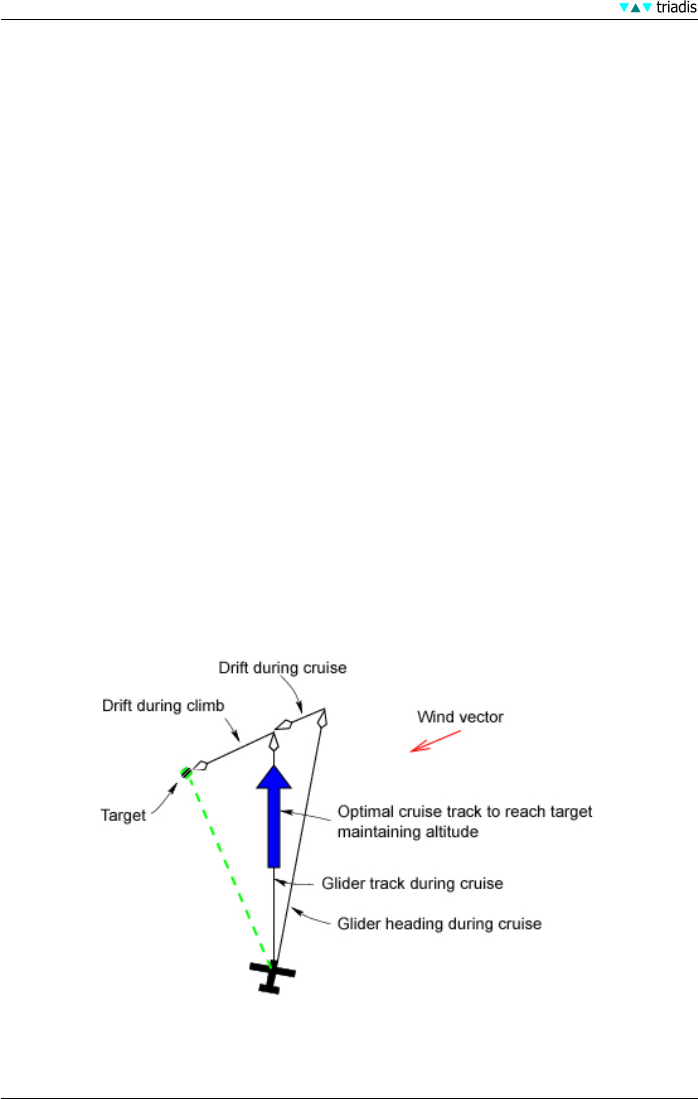User`s manual
Table Of Contents
- Introduction
- User Interface
- Display Elements
- Cross Country Tasks
- Glide Computer
- Atmosphere and Instruments
- Airspace, Traffic and Team Flying
- Avionics and Airframe
- Quickstart
- InfoBox Reference
- Configuration
- Data Files
- About XCSoar
- GNU General Public License

5 GLIDE COMPUTER
• Task speed instantaneous This is the instantaneous estimated speed along the task. When
climbing at the MacCready setting, this number will be similar to the estimated task speed.
When climbing slowly or flying off-course, this number will be lower than the estimated task
speed. In cruise at the optimum speed in zero lift, this number will be similar to the estimated
task speed. This measure, available as an InfoBox is useful as a continuous indicator of the
cross-country performance. It is not used in any internal calculations.
In addition, a measure called achieved MacCready is calculated. This is computed by finding the
MacCready setting that under classical MacCready flight would produce the same task speed as
has been achieved. This value is higher than the actual MacCready setting when the glider has
climbed faster than the MacCready setting or when the glider has flown in cloud streets etc. The
achieved MacCready is used in the task calculator dialog.
Task speed estimates for achieved speed, are compensated for altitude variations, such that the
effects of climbs are taken into account in calculating the average task speed. Considering two
gliders A and B flying the same task. Glider A has cruised faster, trading off height for speed.
Glider B is behind A but higher and will save time later since it has less climbing to do to complete
the task.
While flying AAT tasks, the task speed measures may change when the glider is inside an AAT
area or when the AAT range or targets are adjusted by the pilot. This is due to the task distance
achieved and remaining when such events occur.
5.10 Optimal cruise track
In order to help reduce the cross-track error when flying between non-final waypoints, XCSoar
calculates an adjustment to the cruise track, called the ’optimal cruise track’. This track is adjusted
so that it compensates for the wind drift incurred when circling, and as such it needs to estimate
the proportion of time spent circling according to classical MacCready theory.
The optimal cruise track is displayed on the map area as a large blue arrow, and it recommends
the glider steers so that the glider’s track is lined up with the blue arrow during cruise such that
55 XCSoar Manual (Altair version) • XCSoar-A-EN










